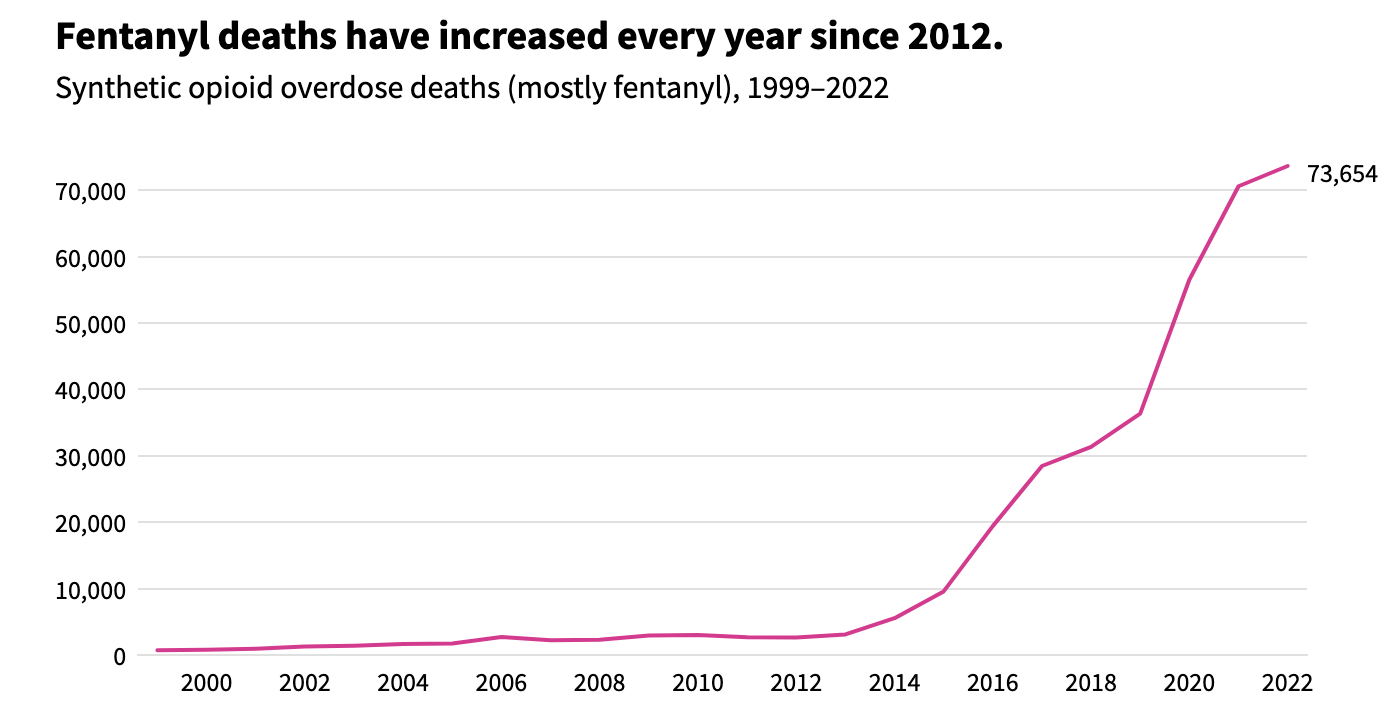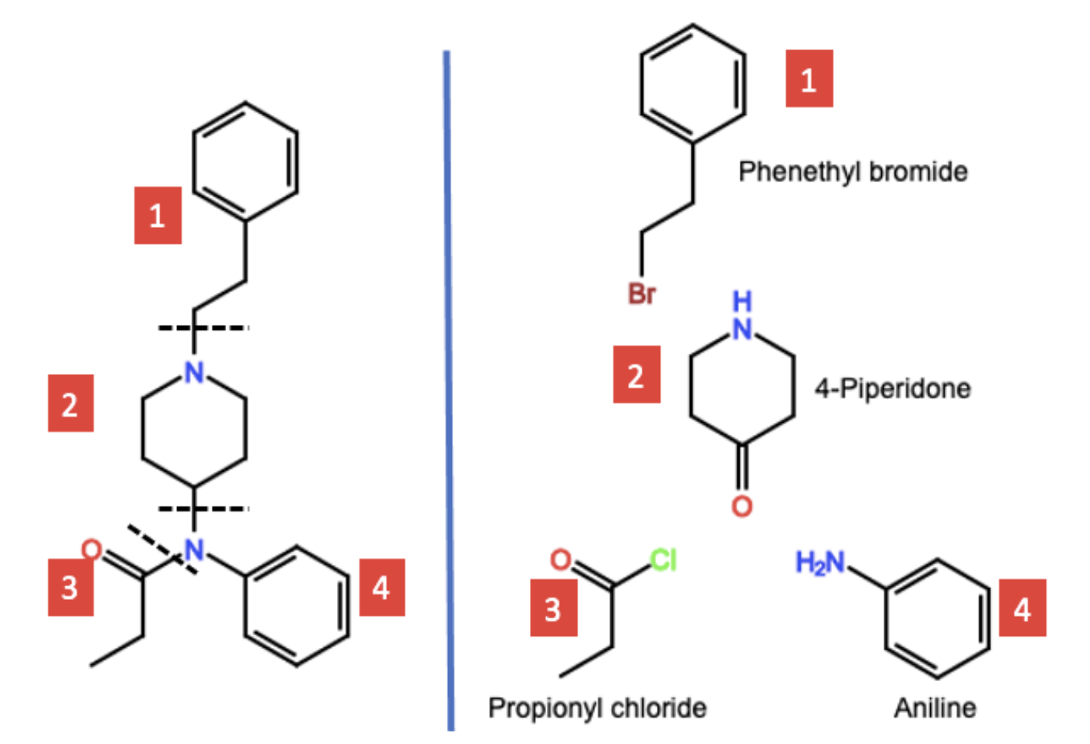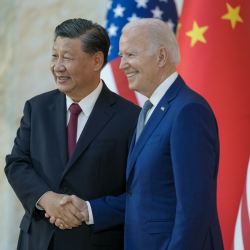The recent meeting between President Biden and China's President Xi Jinping delved into the U.S. fentanyl crisis, centering on the export of fentanyl chemical precursors from China to Mexico, where they are converted into fentanyl. However, there is an inherent challenge in restricting precursor chemicals. A minimally trained organic chemist can either make them or simply use a different, unrestricted chemical. Thus, any international agreement designed to minimize fentanyl by restricting precursors is likely to fail, defeated by organic chemistry.
A recent meeting between President's Biden and Xi focused on the enormous (and growing) fentanyl crisis in the U.S., which is being fueled by the export of the drug to Mexico, where it is illegally trafficked into the US. But their discussion involved more than this. Chinese companies haven't just been making fentanyl; they have also been making and exporting precursor chemicals that are converted into fentanyl (more on that later). Neither problem will be easy to stop, although the two leaders have agreed to include the control of precursor chemicals (not named) in their plans. Will it make a difference?
I think we can all agree that efforts to control the exportation of the deadly drug have not put a dent in the problem; deaths from fentanyl overdoses have increased every year from 2012-2022. This is irrefutable.

Fentanyl deaths in the US by year. Sources: USA Facts, Centers for Disease Control. 2022 data is provisional and subject to change.
While the DEA is working on improved methods for detecting the drug – a very difficult undertaking – it is important to realize that keeping fentanyl from moving freely around the world – a topic of recent Biden Xi discussions – is more complex. A second and related problem may be even more challenging: The availability of alternate fentanyl synthetic precursors, something I wrote about in 2018. The difference now is that vast amounts of these chemicals are being sent from China to Mexico, where they are being converted to fentanyl (and fentanyl analogs) by cartels. This makes a nearly impossible job even worse. Here's why.
What's the problem?
In short, organic chemistry. There are several (potentially unlimited) ways to synthesize fentanyl (and its analogs) called synthetic routes. Here's one of them.

Fentanyl (left) can be broken up into four imaginary fragments (these are also called synthons) (1). On the left, I have divided the drug into theoretical sections (this process is called retrosynthetic analysis), which if put together chemically will make the drug. It is important to keep in mind that another organic chemist may look at the structure of fentanyl and come up with an entirely different retrosynthetic analysis. Let's go through mine –the original synthesis used by Janssen in the 1950s.
For the sake of simplicity, the fragments denoted by red numbers are:
- Phenethyl portion
- Piperidine portion
- Propionyl portion
- Aniline portion
Now, let's see what happens if the chemicals used to make these fragments are banned or restricted.
Phenethyl bromide (#1, right side)
Phenethyl bromide, used to install the "phenethyl fragment," was once a benign lab chemical. You could have ordered a gallon of it, and no one would know or care. Not anymore. The chemical is now on the DEA's "Special Surveillance List of Chemicals." Try buying a gallon now. Hope you enjoy prison food.
This list is a mere inconvenience to cartel chemists. Phenethyl bromide can made from phenethyl alcohol (this is child's play), aka "rose oil" – a ubiquitous natural chemical, which can be obtained either from flowers or produced industrially. Phenethyl alcohol will never get on a restricted chemical list because it is used for a huge variety of legitimate purposes, including:
- Fragrance and Perfume Industry
- Flavor Industry
- Cosmetics, lotions, creams...
- To make certain drugs and formulations.
- Food and Beverages industry
- Aromatherapy
Banning or restricting an important and versatile chemical is impossible. Annual production is 10,000 metric tons (22 million pounds). So, at best, restricting phenethyl bromide makes the chemist do a little (very little) work to synthesize it or make something that works just as well. (2)
4-Piperidone (#2, right side)
Piperidine-4-one, aka 4-piperidone, is also a common intermediate used to make drugs and agricultural chemicals. It is sold by two dozen chemical vendors, but getting your hands on it became more difficult this past spring when the DEA designated it as a List I Chemical. Unlike phenethyl bromide, there is no trivial way to make the stuff, although there are literature methods, for example, this one. Will designating 4-piperidone make fentanyl production more difficult? Maybe.
Propionyl chloride (#3, right side)
Forget this one. Propionyl chloride can be made from propionic acid by a special-needs nematode. And don't bother suggesting the restriction of propionic acid or its sodium salt (sodium propionate) – a safe (designated GRAS by the FDA) and very commonly used preservative. Sodium propionate inhibits the growth of bacteria and fungi in a wide variety of baked goods and animal feed. You can buy one-gallon bags of the stuff on Amazon for next to nothing. The annual production of the chemical is 200,000 metric tons. Regulating propionic acid or sodium propionate is not feasible.
Aniline (#4, right side)
Let's not waste our time here. Aniline, which is probably sitting on the shelf in half the world's chemistry labs, is used (to name a few) to make dyes, rubber, urethanes, and pharmaceuticals. In 2022, global production was 3.4 billion metric tons, a mere 7.5 trillion pounds. Good luck trying to restrict this.
But it's even worse.
In the figure above I showed one synthetic pathway that is used to produce fentanyl and its analogs. But there is more than one road to Rome. A paper titled "Fentanyl Synthetic Methodology: A Comparative Study, which was published by (grab onto something sturdy before proceeding here) The US Army Armament Munitions Chemical Command in 1992, lists six different synthetic schemes that can be used to prepare fentanyl. I counted about 3 dozen different chemicals and then gave up.
What about the Biden Xi discussions?
Thanks to chemistry, it should now be obvious that trying to get a handle on the fentanyl pouring into the US by restricting simple, widely available, or easy-to-make chemicals is likely to be ineffective. And President Xi, while agreeing to try to stem the flow of precursor chemicals, seems to know a bit about chemistry. [my emphasis]
Certain precursors used in the production of fentanyl are internationally classified as unscheduled chemicals and legal to produce in China and export. Beijing argues that it cannot restrict the export of precursors that are not illegal.
It's not terribly different than the examples I gave, right?
Bottom line
I didn't write Organic Chemistry Can Defeat Any Fentanyl Agreement in 2018 for no reason. Restricting fentanyl chemicals, which is not even feasible in many cases, may temporarily inconvenience chemists but they will always be able to find a way around it. In the end, if people want to take drugs they are going to do so. An agreement between two countries makes for good headlines but in terms of saving lives, it is probably irrelevant (3).
(1) ChatGPT: "In organic chemistry, a synthon refers to a hypothetical, readily manipulable molecule fragment that can be used as a building block for constructing more complex molecules. Chemists often use synthons to plan and describe synthetic routes in organic synthesis. They are like building blocks or intermediates that simplify the design and understanding of chemical reactions."
(2) For example, phenethyl alcohol can be reacted with a simple, common chemical called methanesulfonyl chloride. This makes another chemical called phenethyl alcohol mesylate. It will work just as well as phenethyl bromide and it is not on the DEA Surveillance List.
(3) Even if every fentanyl chemical was wiped off the face of the earth cartels will simply switch to different drugs. U47700 aka "Pink" – a narcotic that is 7-8 times more potent than heroin – is showing up in fentanyl samples. And it's ridiculously easy to make. I wrote about it this month. And, of course, nitazenes, a class of opioid receptor agonists, that can be even more potent than fentanyl, are showing up in fentanyl samples. How to stop this? I haven't a clue.
UPDATE 12/6/23:
Cato Institute's Dr. Jeff Singer, a frequent collaborator, (and also an ACSH advisor) sent me the following. It seems that India is also in the fentanyl business: https://www.dea.gov/sites/default/files/2020-03/DEA_GOV_DIR-008-20%20Fentanyl%20Flow%20in%20the%20United%20States_0.pdf

